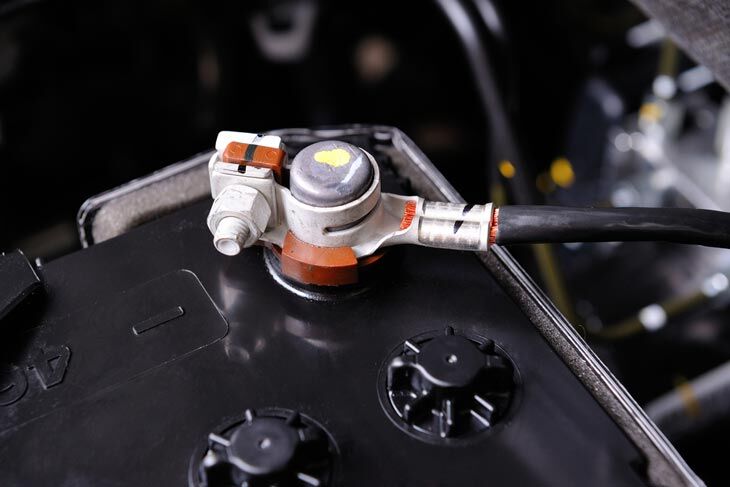When it comes to the maintenance of your vehicle, the smallest details can have a significant impact on overall performance. One such detail often overlooked is the application of dielectric grease on battery posts and terminals. This topic branches into various facets of automotive care, including corrosion prevention, electrical conductivity, and the very longevity of your battery itself. It’s a fascinating subject that invites both casual car enthusiasts and seasoned mechanics to delve deeper.
To begin, let’s clarify what dielectric grease actually is. This non-conductive, silicone-based compound is primarily used to seal and protect electrical connections from moisture, dirt, and other detrimental elements. It acts as a barrier, ensuring that electrical circuits maintain their integrity while warding off environmental contaminants. But how does this apply to battery terminals, you may wonder? After all, a battery is an electric powerhouse that demands optimal connection without impedance.
One prevalent observation among car owners is that after a few months of operation, battery terminals often show signs of corrosion. This corrosion can form a crusty, white substance called lead sulfate. If left unchecked, this buildup can interfere with the essential electrical connection required for your vehicle to start and run smoothly. Therefore, applying dielectric grease could potentially serve a dual purpose: it not only prevents such corrosion but may also enhance the overall functionality of the connection.
Moving beyond this initial observation, let’s explore the magnitude of dielectric grease’s effectiveness. Many people use it liberally on various electrical connections without understanding the underlying science. The compound’s viscosity creates a protective seal that can hinder moisture and other corrosive agents from accessing the battery terminals. By applying this grease, you create a formidable defense against the elements that threaten the durability of your battery connections.
However, there exists a common misconception: some enthusiasts argue that dielectric grease can hinder electrical conductivity. This argument stems from the fact that the application of any substance on an electrical connection could introduce resistance. Nevertheless, if applied correctly, dielectric grease does not impede the flow of electricity; rather, it enhances the longevity of the connection by keeping the terminals clean and free from corrosion. The key lies not in excessive application but in a judicious, measured approach. A thin layer evenly spread over the surface is generally adequate, ensuring vital electrical currents aren’t impeded.
Furthermore, let’s discuss the practicality of applying dielectric grease. For many vehicle owners, the process is straightforward. Begin by cleaning the terminals of any existing corrosion with a wire brush. Once they are clean, rinse them with water to eliminate any residues, and dry them thoroughly. Now, apply the dielectric grease—a small amount will suffice. It’s essential to ensure that the grease makes contact only with the terminal and does not interfere with the bolt or lug that holds the battery cable in place. This enhances the bond while protecting the metal beneath.
In addition to corrosion prevention, applying dielectric grease can enhance the mechanical bond between the cable and the terminal. A well-sealed connection not only ensures optimal electrical flow but also minimizes disconnections caused by vibration, a critical factor for vehicles navigating turbulent terrains.
As we notice these benefits, another intriguing aspect surfaces: longevity. Batteries, while often seen as consumables, are not designed to fail after a short lifespan if properly maintained. By mitigating corrosion with dielectric grease, you could potentially extend the life of your battery, saving you both time and money on premature replacements. This notion of cost-effectiveness ties back to the emotional and financial investment individuals place in their vehicles, making the use of dielectric grease not merely a simple task but an empowering choice.
Now, let’s pivot slightly and discuss different scenarios wherein dielectric grease may or may not be appropriate. For instance, if you own a vintage vehicle, you might prefer to maintain original connections without any modern additives. Certain classic car aficionados adhere strictly to traditional methods, believing that vintage vehicles should rely solely on mechanical integrity. In other cases, however, modern vehicles often benefit significantly from current advancements in automotive care, like dielectric grease. Thus, context matters immensely; knowing when to adapt new practices is essential for optimal maintenance.
Moreover, consider the environmental implications as well. While dielectric grease is generally durable and resistant, it’s advisable to dispose of any waste materials responsibly. Carelessly discarding excess grease can be harmful to the environment, as many motor oils and chemicals can leach into the soil. Hence, while one is intent on protecting their vehicle, a parallel responsibility toward environmental stewardship also reigns supreme.
In conclusion, the use of dielectric grease on battery posts and terminals is a powerful ally in the realm of vehicle maintenance. With its benefits ranging from corrosion prevention to enhancing electrical connections, dielectric grease proves its worth as a simple yet effective solution. Understanding when and how to utilize it, combined with a broader perspective on maintenance, can empower vehicle owners to make informed decisions. On the journey through automotive care, embracing small details like dielectric grease can lead to a more reliable and longer-lasting vehicle, ultimately enriching your driving experience.
